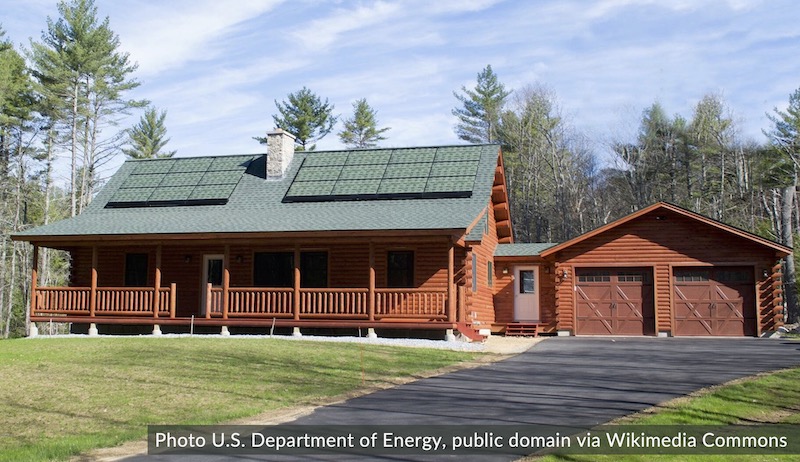
In this age of green—or greener—energy, we’re inundated with ads pushing solar panels, solar panel installation services, and sometimes even “Free Solar Power!” We may love the idea of converting our homes to solar. Actually accomplishing that, however, can seem a little daunting.
Nevertheless, transitioning to solar energy is decidedly worth investigating. “Solar is a wonderful choice for many people, for many reasons. It’s great for the environment, and it can also help homeowners save money,” Clean Energy States Alliance (CESA) Executive Director Warren Leon says.
There have been incredible advances in solar technology over the last several years. As a result, today’s solar power systems can last 25 years or longer. Furthermore, the cost to switch to solar power has gone down by two-thirds in under a decade.
“Since going solar is a big financial decision that will impact your home’s value and your utility bills for years to come, it’s important to do your homework about the companies you are thinking about working with,” Leon continues.
Getting Started
Before considering different solar options and financing, you should know your current energy costs and usage rates. Knowing these will help you to estimate your potential savings with solar power.
How much you could save partly depends on how much sun exposure your property gets. And, if you remain connected to the local power grid—as many solar-powered homes do—you might also be subject to certain fixed costs from the utility company.
However, this varies from state to state.
If your household uses lots of electricity, you might not be able to generate enough power on your own to cover everything you use. In that case, some of your power would come from solar, and any additional electricity needed would come from your utility company.
But, if your household requires less energy to operate, you could supply all of your own power and generate excess that you then sell back to the utility company. (Again, energy buy-back programs vary, so you’ll need to find out what your local utility company’s policy is.)

Financing Solar Setups
A few of the most common ways to pay for adding solar include:
Cash
If you can afford to purchase a solar system outright with cash, you’ll own the equipment, reap any associated energy cost savings, and directly benefit from any applicable state and federal tax credits and incentives. (Just make sure that your long-term savings square with the up-front cost to buy and install that solar equipment.)
Loan
Depending on your credit, both secured and unsecured loans may be available to cover your solar costs. As with mortgage loans, interest rates and terms can vary greatly from lender to lender. Like the cash option, if you pay via loan, you own the equipment and can directly reap the benefits.
Solar Lease
There are solar installation companies that will cover all of the upfront costs for you. In exchange, you agree to cover monthly lease payments for what can be 15 years or even longer. Be aware that solar leases often include “escalator” clauses, meaning your lease payments will go up in the ensuing years to cover inflation and rising energy costs.
Also, unlike with the cash or loan options, you don’t own the solar equipment and you typically won’t reap any tax credits or benefits. But you do get the solar power you generate, as well as any applicable credits from excess power you may put back into the local power grid.
Just make sure the monthly energy savings you anticipate will be worth springing for the solar lease payments.
Power Purchase Agreement (PPA)
PPAs are similar to solar leases in that you don’t pay for equipment or installation upfront and you typically won’t reap any tax credits or benefits. In this case, you aren’t leasing the equipment. Rather, you’re paying the installer for the solar power generated.
If you need extra power, you purchase that from the utility company. And if you use less power than you generate, you’d get any applicable credits from the excess power you put back into the local power grid.
Like solar leases, PPAs may also include escalator clauses, so read the fine print carefully. Also, when weighing PPAs as an option, compare how much you pay per kilowatt hour now versus how much you’d be paying for solar energy per kilowatt hour.
For greater detail, see CESA’s “A Homeowner’s Guide to Solar Financing: Leases, Loans, and PPAs.” Other useful resources include George Washington University Solar Institute and the U.S. Department of Energy SunShot Initiative.
Read more: Read more about bringing solar power to your farm.
Choosing a Contractor
Not sure where to start? Your state may provide a list of solar power installers. Interview as many of them as possible. “Get multiple quotes and make sure you understand the different financing options available to you,” Leon recommends.
Reputable installers should be willing to complete a Solar Energy Industries Association (SEIA) solar purchase disclosure form for you. At minimum, they should also provide references, proof of their qualifications, current liability and workers’ compensation insurance policies, and detailed cost estimates.
These estimates should include total expenses, solar specs—like the system’s size and kilowatt-generating capabilities—and equipment warranty information.




